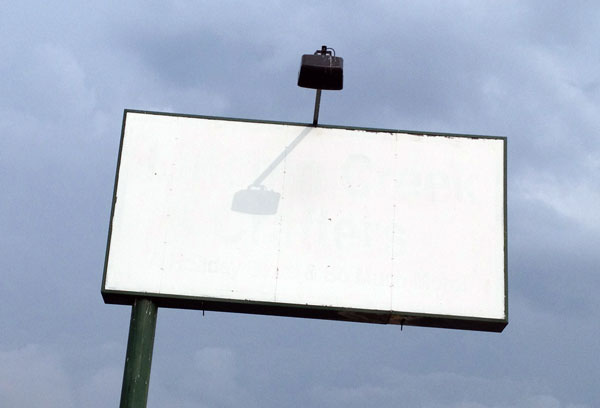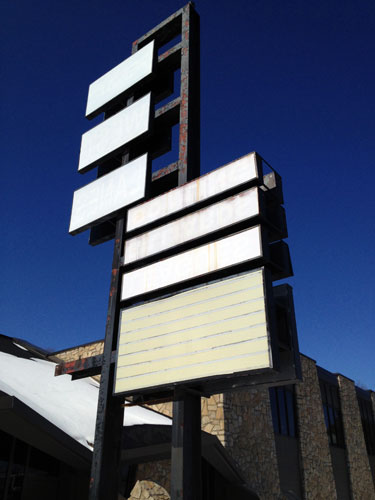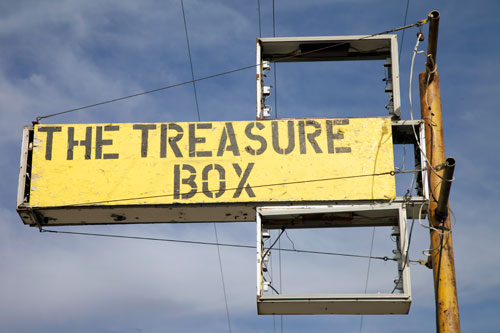The Sound and Fury (2013)
Original Photographs
(Photographer)
S Y N O P S I S
I first became interested in photographing old signs when I began to notice how many empty, run-down, and boarded-up buildings there are within a few miles of my home. Considering the visual chaos of the average city, I think we tend to tune out signage unless we are looking for something, at which point a sign designating exactly what we want can be rather useful. States like Oregon have laws about signs to prevent visual pollution from cluttering the forested landscape, whereas desert states like Nevada seem to have planted billboards instead of trees. I’m not sure I can figure out what the plan was supposed to be for my current state of Missouri, but it took about a year of my daily commute before I was able to mentally register how many abandoned signs appeared on my route to and from work. This was not just the economic downturn–some of these businesses had been closed for years, possibly decades. Clearly I wasn’t the only one tuning out visual clutter. As I drove by every day I would think to myself “this is a sign of something,” and feel clever for making the pun. Over time my thoughts turned to semiotics. How literal could this get? A broken sign that used to advertise a particular business, in front of a boarded-up building that used to be that business? Talk about an empty signifier pointing to an absent referent. Although empty (devoid of lettering, painted over, or broken), a derelict sign continues to exhibit certain qualities we might understand as common characteristics of “signness.” For example, most signs start with a shape such as a square, rectangle, or circle. Signs can be found standing tall at the entrance of a parking lot, prominently attached to a building, or along the sides of the road. Typically, signs use bright colors, large letters, and often include lighting for nighttime use. It’s not hard to see that even a broken sign is still a sign–the question becomes how far does a particular sign deviate from what might be considered the “proper” qualities of signness? If a sign strays too far when does it stop being relevant? When is a sign no longer a sign? I already felt bad about the obvious urban blight, but now I began to think of the signs themselves languishing in front of their defunct buildings, perched atop businesses that would not reopen, never again to realize their true potential or touch their former glory. Ultimately, THE SOUND AND FURY plays with our assumptions about progress and potential, questioning desire for meaning, fulfillment of purpose, and dignity. The signs themselves remain steadfast, immutable, testifying to utterly human conceits.
IT IS A TALE TOLD BY AN IDIOT, FULL OF SOUND AND FURY, SIGNIFYING NOTHING
–Shakespeare (Macbeth–Act 5, Scene 5)
E X H I B I T I O N R E C O R D
Ongoing Project
- Empty Signifier
C R E D I T S
g e n r e / c a t e g o r y : Photography
c o n c e p t : Kelly Wittenberg
o r i g i n a l l y s h o t o n : Canon 5D Mark II (Digital)
- Unlimited Semiosis








